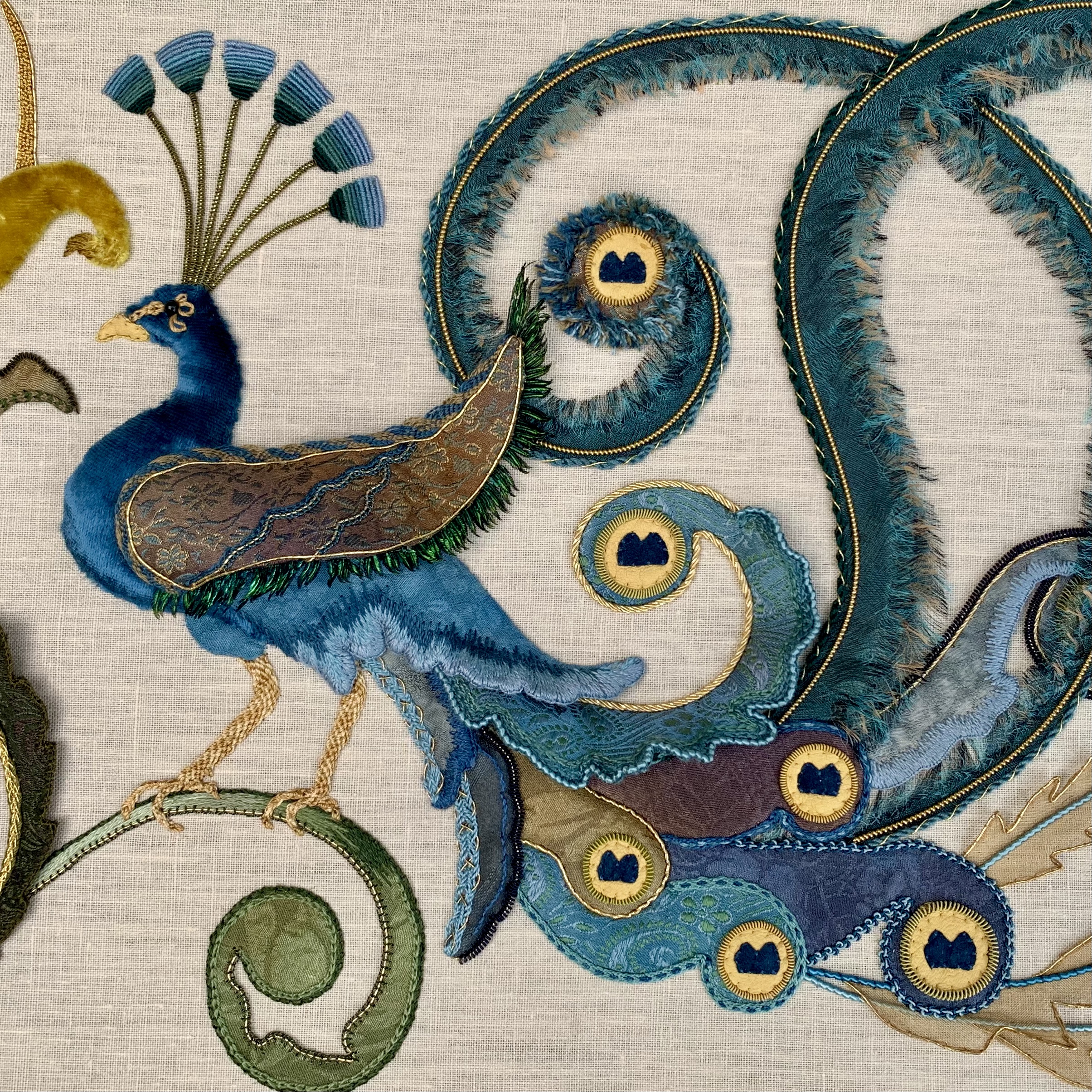One of the most surprising things about deciding to complete a program designed by someone else is that you are forced to learn and create things that you would never otherwise choose to do. Appliqué falls into this category for me. This class is a requirement for the RSN Diploma in Technical Hand Embroidery. While I have seen some appliqué work on quilts that I appreciated, it was never a technique that inspired me personally. I tend more towards small detailed techniques. However, since I was looking at spending 100 plus hours on an appliqué project, I pushed myself to find some inspiration.

It only took photos of the Arab Hall mosaic in Leighton House to energize my imagination. Now a museum in London, the Arab Hall was inspired by La Zisa, a twelve century palace in Palermo, Sicily. It was build by George Aitchison, at the end of the 19th century, with the help of many artisans including Water Crane who designed the wall mosaics. Sadly, I have not seen the Arab Hall, but hope I will someday soon. I picked the peacock from the mosaic, as its whimsical design lends itself to exploring many different fabrics and embroidered detail, perfect for appliqué.

Although I started with a larger range, I settled on a small color range from yellow to blue, but incorporated many shades in this range. This provided balance, without limiting variety. I used 5 main fabric types (7 if you include the linen and brass), which were also balanced in the design. I used a 6th fabric, linen, as the ground. Fabric like the silk organza was chosen to compliment the design of feathers by using frayed edges. I was thrilled to find a selection of small scale, hand dyed, silk, jacquard and brocade fabrics from The French Needle. Having found an inspiring design and fabulous supplies (which I rounded out with silk threads), I was thrilled to get the project started.
I used a 52 count linen for the ground fabric. I used a selection of brocade, jacquard, plain and textured silk organza, velvet, brass mesh and leather for the appliqué. The hand dyed silks provided a spectrum of complimentary colors and natural color variation. I found the selection perfect for the feathers. As they are feathers, I set the grains to be varied to create a natural feel of randomness. The one exception was the large organza feathers. The organza was cut on the bias to create the even frayed edge. I was thrilled with the final result. I appliquéd the fabric a few different ways based on whether or not the underside would show, but found that a turned edge was preferred even if an edging was being used. I only allowed raw edges on the very small pieces were turning was impossible. A full coverage of long and short was used to finish these areas cleanly. I was very pleased with my results.
I had a wonderful time experimenting with edging for my appliquéd areas. I used 6 different finger loop braids for edgings. I also used a twisted cord, a double twisted cord, and a half-hitch cord that were all created by me. For the simple twisted cord, I also performed a decrease as I worked it around the Calla lily. For the peacock legs, I started with an 8 loop flat finger braid and then divided it into 2 triangular loop braids and 1 twisted cord to create the feet. I was particularly pleased with the final results fo that design. In addition to my handmade cords, I also used a wide variety of pre-made edgings included pearl purl, silk covered purl, and gilt passing.
At the completion of this piece, I was pleasantly surprised to find it was one of my favorite pieces for the RSN diploma. I also discover that I learned some new things that I will find myself incorporating into future work. I am glad I did not try to skip over this technique!


